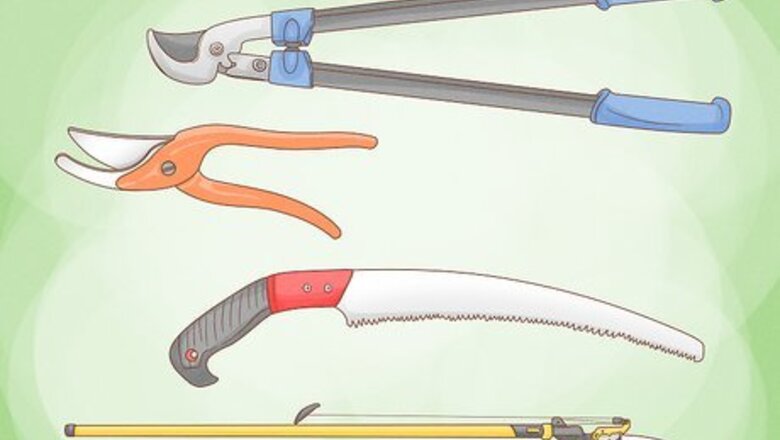
views
Preparing to Prune the Plant
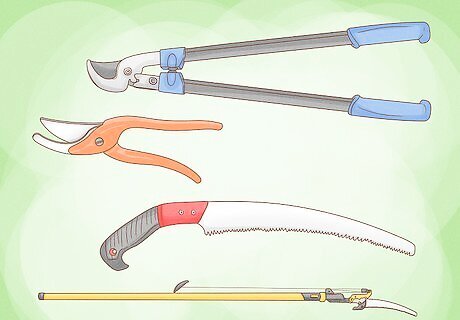
Gather pruning equipment. To prune a mature crepe myrtle, you're going to need a few different types of pruning tools. Gather the following supplies from your garage or a hardware store before you get started: A hand pruner, for pruning small twigs and thin branches. Loppers, which are used to cut thicker branches that are higher up. Pole pruners, which cut even thicker branches. A pruning saw, for the thickest branches you need to cut.

Start to prune in the late winter or early spring. Crepe myrtles bloom on new growth, so it’s best to prune them in the late winter or early spring just before they come out of dormancy and send out new leaves and branches. Some gardeners prune in the fall, but this can remove the year’s new growth as a buffer against winter damage. Crepe myrtles grow flower buds on new growth, so you should still get blossoms as long as you leave enough time in the growing season. If leaves haven’t yet or have just barely appeared, it should be safe to prune your plant. It’s possible to prune as late or even later than May without harming the tree. However, pruning this late will probably delay your bloom time. Pruning before leaves sprout on the tree is also helpful because you get a clearer view of which branches to cut. Keep in mind that you can remove flowers when they fade in the summer to encourage a second bloom, as well.
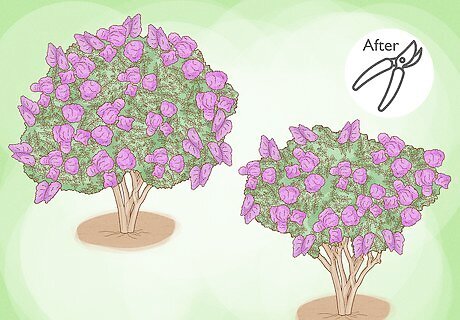
Determine what shape and size you want the crepe myrtle to be. To keep a crepe myrtle healthy and beautiful, you want to prune with an eye toward opening up the middle of the tree to allow air to flow through more easily. Don't over-prune by lopping the trunks close to the ground. Aside from those guidelines, you can prune your crepe myrtle to a shape and size that works for your yard. Crepe myrtles can grow about 1 to 2 feet (30-40 cm) per season, so prune based on your desired tree height. For example, if you want your tree to be about 6 feet (2 m) tall, you will want to prune back to 4 to 5 feet (121 cm to 166 cm). Keep in mind that new growth will sprout from the pruned areas.
Pruning the Crepe Myrtle
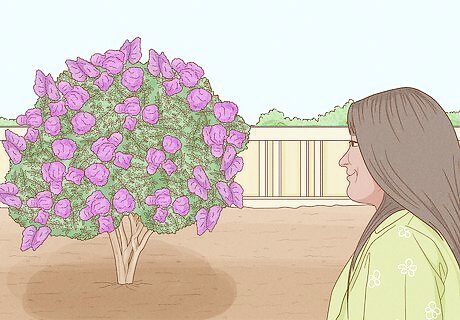
Stand back and observe how the crepe myrtle is growing. Brutal knobbing (the method above) can produce a lot of blooms but it comes at the expense of the shape of the tree. This is because crepe myrtles will skin over and repair any place where a branch has been removed. Therefore, imagine that after you've pruned, whatever you leave behind will grow larger in both circumference and length each year. Look at images of crepe myrtles from a hundred years ago and you'll see how beautiful the tree looked when pruned more gently.
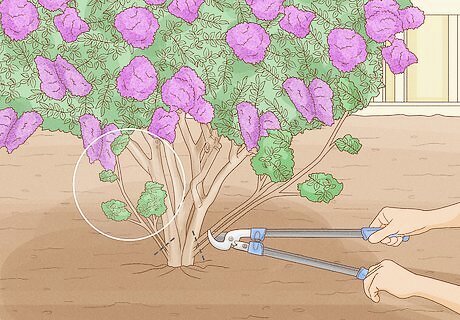
Prune small sprouts at bottom of tree first. These are called "suckers." Left untrimmed, these will give your crepe myrtle a bushy appearance, and may compete with your main trunks for resources. Suckers can be pulled out when they first sprout or trimmed with a hand pruner. Leave the large, healthy, thick trunks to keep growing taller and stronger.

Cut side branches. Prune any branches coming out of side of the trunk up to about halfway up the trunk. This is called limbing-up, and helps the tree retain an attractive shape. For younger trees that you are starting to shape, prune the small limbs from the ground up, leaving only the 3-5 strongest limbs. Remove smaller branches that are growing horizontally or toward the inside of the tree.

Prune out dead and crossing branches. You can use hand pruners for small, thin branches that you can reach, loppers for branches that are more than 1/2 inch (12 mm) thick, or a pole pruner for thicker or taller branches. Cut branches that are growing at an angle or that detract from the shape you are trying to achieve.
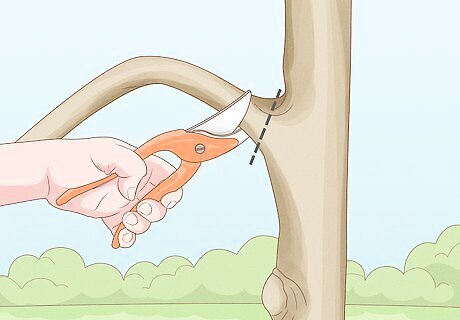
Cut long or arching branches back to where they are no more than 1/2-inch in diameter. Branches that are too thin will still bloom, but they will not be able to bear the weight of the blooms and will droop or break. If you're cutting a branch back to the trunk, cut flush with the trunk instead of leaving a stub. Use loppers for lower branches or pole pruners for the tall ones out of reach. It is not necessary to cut off seed pods. It won't affect blooming.
Assessing Your Crepe Myrtle Plant
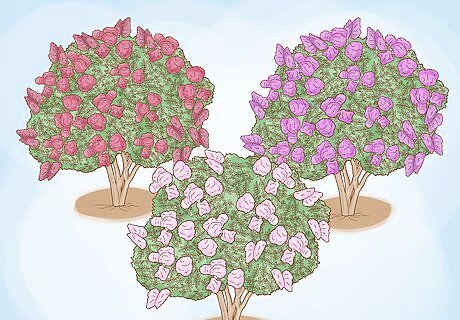
Look at the flower color. There are dozens of varieties of crepe myrtle, and each has a different growing pattern that may impact how you want to prune it. One way to narrow down the type of crepe myrtle you are growing is to look at the color of the blossoms. This alone will not tell you what type of plant you have, but it can assist you in narrowing down your search. Popular varieties of crepe myrtle include Catawba, which has purple blooms, Osage, which has light pink blossoms, Natchez, which has white blooms, and Miami, which has bright pink flowers. The length of the bloom may also help you figure out your variety. Some crepe myrtle plants, such as Natchez and Osage, have longer blooming periods than the average plant.
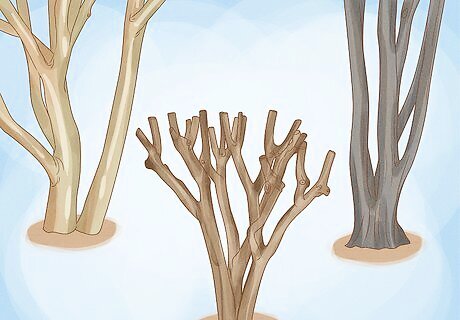
Check the bark color. Along with blossom color, the bark color of your crepe myrtle can help you figure out which variety you have. Bark may range in color from gray to brown, and may be muted or vibrant. Compare both bark and flower color to help you determine which crepe myrtle plant you are working with. Catawba has a light gray-brown bark, while Osage and Miami have a deep chestnut brown color. Natchez has cinnamon-colored bark.
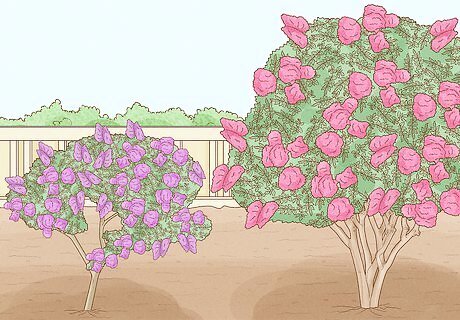
Evaluate the growing pattern. Crepe myrtles can grow in number of ways, and the nature of their growth will impact you you trim them. Some varieties grow like small trees, while others as small, compact shrubs, and others still grow as broad, spreading shrubs. Look at how your crepe myrtle grows to determine how you want to prune it. Catawba grow as a small shrub where Osage grows as a large shrub or small tree. Both Miami and Natchez grow as trees, though Natchez varieties tend to arch where Miami varieties grow upright.
















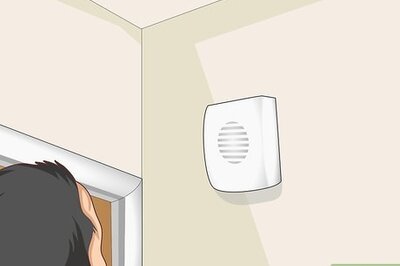


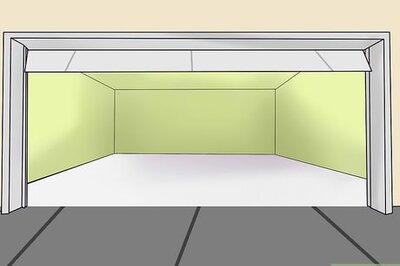
Comments
0 comment